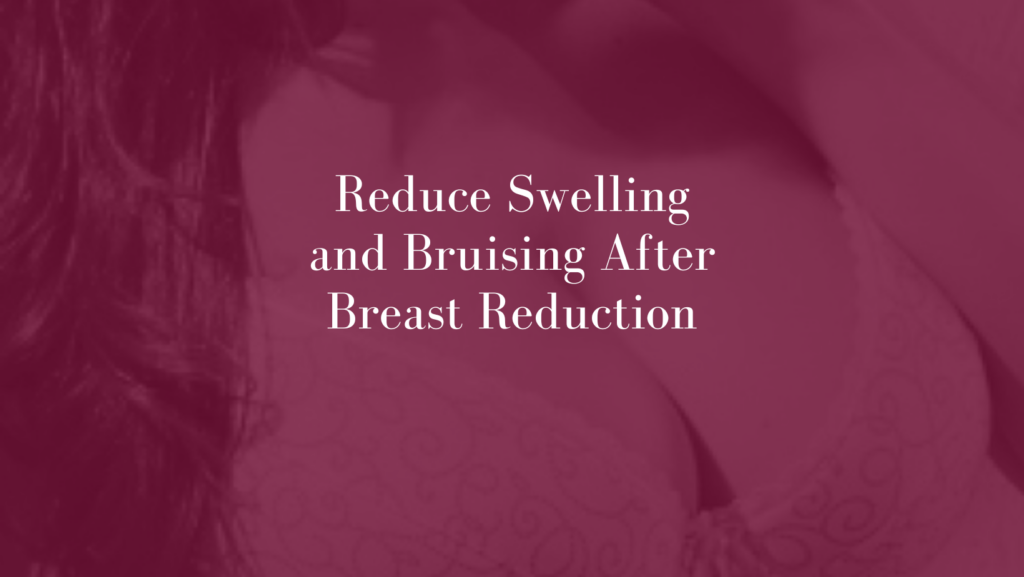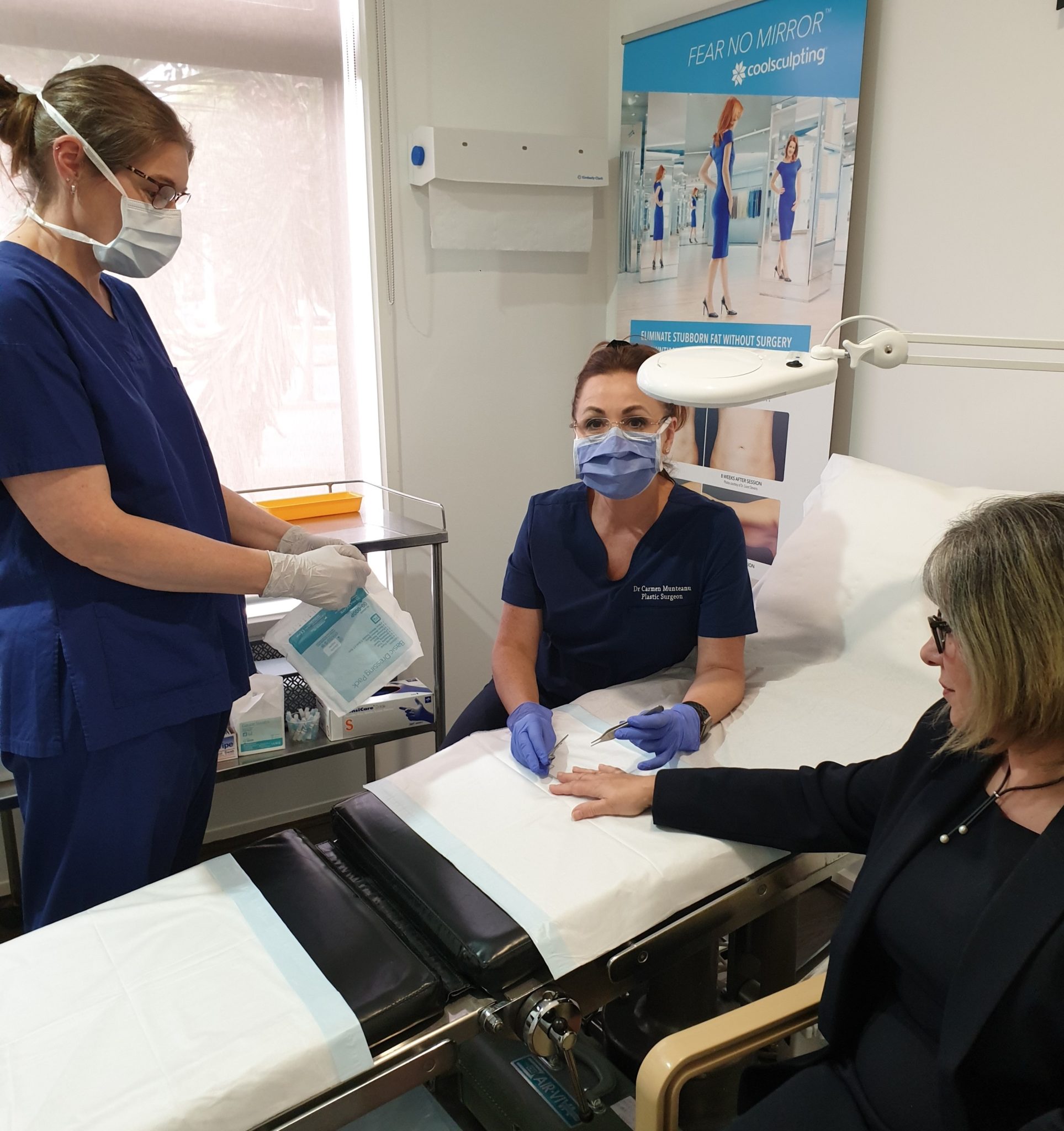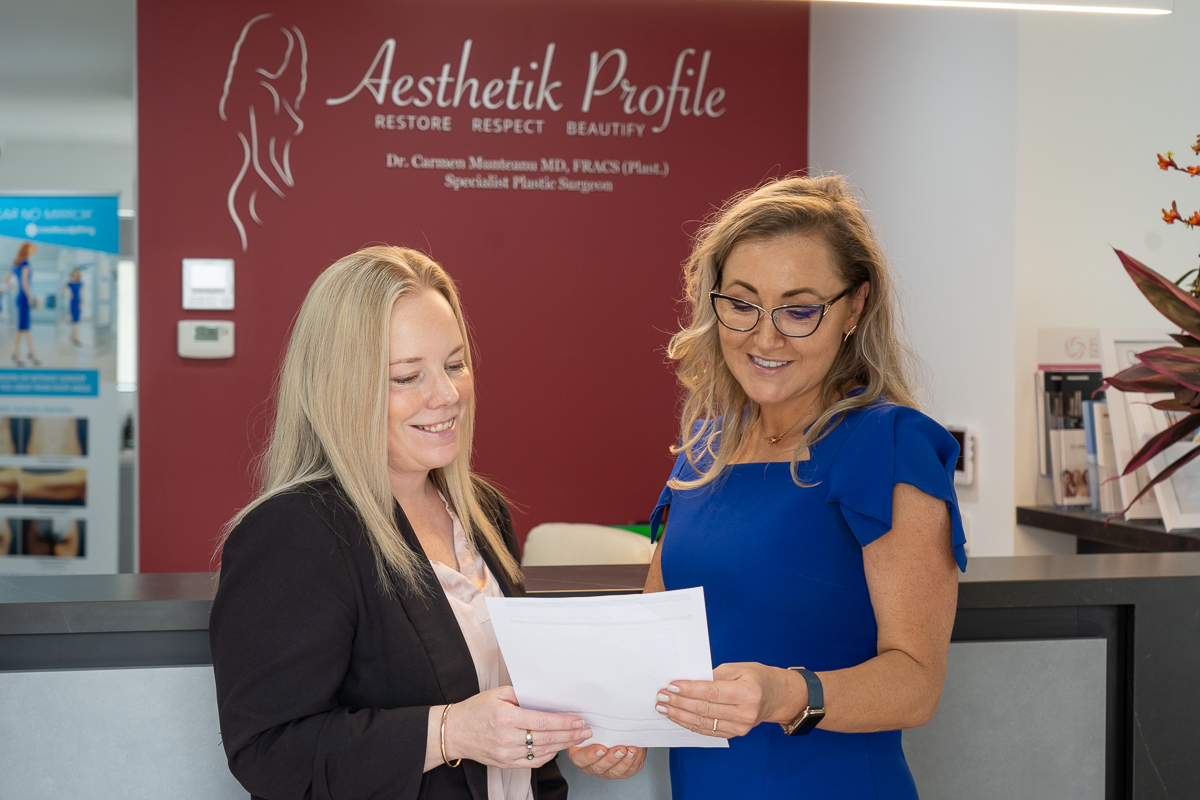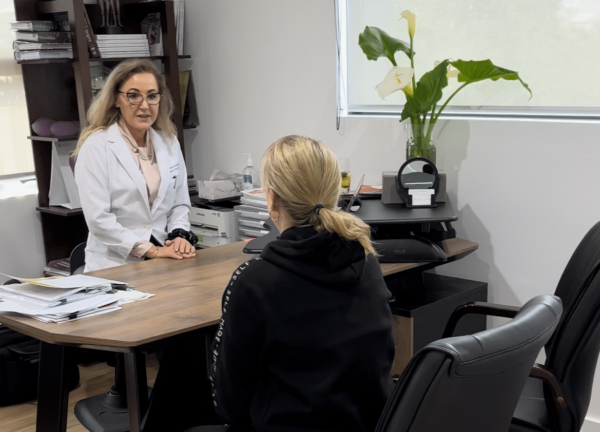Tips and Techniques for a Smoother Recovery after Breast Reduction
Breast reduction surgery, for many, represents a step towards greater physical comfort and a more proportionate body silhouette. In recent years, more and more Australians are choosing this surgical option, making it a popular choice for those seeking relief from back pain, skin irritation, and other issues caused by disproportionately large breasts. However, as with any surgical procedure, there are some post-operative challenges to navigate, including how to reduce swelling and bruising after breast reduction surgery. While these are natural reactions of the body to the surgery, it’s understandable if they cause you some worry.
In this blog, Specialist Plastic Surgeon Dr Carmen Munteanu will guide you on understanding these concerns and offer practical advice on how to manage and reduce them.
Take our Plastic Surgery Quiz to find out if you’d be a good candidate and if you are ready for cosmetic surgery.
Understanding Post-Surgical Swelling and Bruising
Whenever you experience an injury, your body has a set of reactions that kick into gear. In the case of surgery, even though it’s controlled and intentional, your body recognises it as a form of trauma. As a result, you’ll notice inflammation, which is simply your body’s way of sending more blood and immune cells to the area to start the healing process. This is why the area might feel warm or look red.
Why Swelling and Bruising Are Common After Surgical Procedures
Swelling, or oedema, is the accumulation of fluid in the tissues. It’s your body’s way of cushioning the surgical area to protect it during the early stages of healing. On the other hand, bruising is caused by small blood vessels, or capillaries, that may break during the surgery. The blood from these vessels leaks into the surrounding tissue, causing a discolouration that can range from blue and purple to yellow and green as it heals.
Remember, both swelling and bruising are normal signs that your body is actively working to heal itself. It’s like when you accidentally bump your arm or leg and notice a bruise forming. It’s the same principle, just on a larger scale due to the nature of the surgery.
Download Dr Carmen’s Breast Reduction Surgery – Reduction Mammaplasty Guide
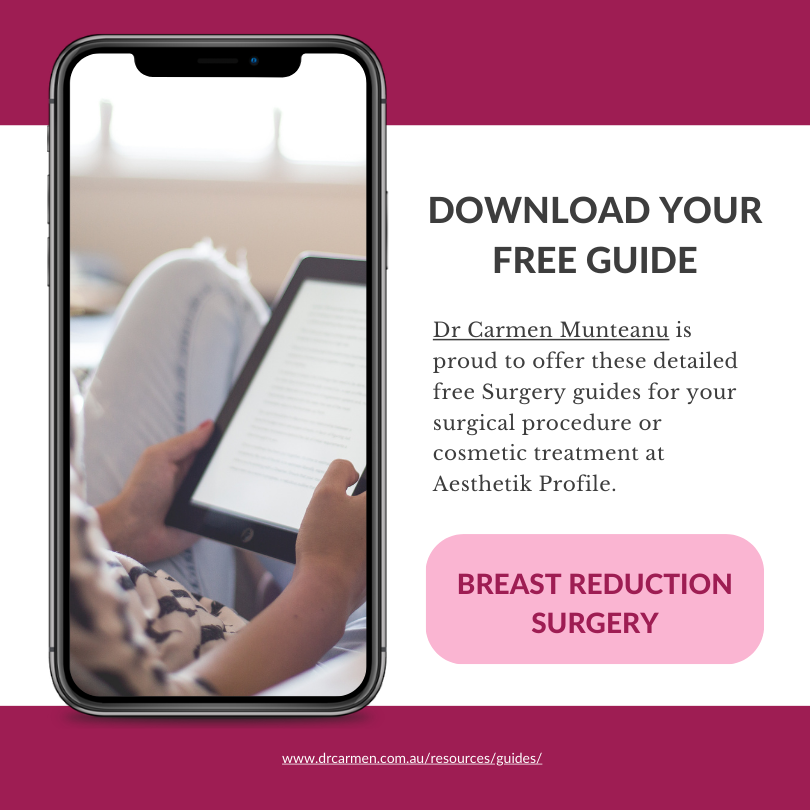
Typical Duration and Progression of Swelling and Bruising After Breast Reduction
For most people, swelling peaks around two to three days after the surgery. After this, it should gradually decrease each day. By the end of the first week, you might notice a significant reduction, but some mild swelling can persist for a few weeks or even a couple of months.
Bruising, on the other hand, often appears worst during the first week. It then starts to change colour as it heals, moving from deep purple or blue shades to lighter yellows and greens. By the third week, most of the bruising should have faded. However, everyone’s body is different, and healing times can vary.
In all stages of recovery, it’s essential to follow your plastic surgeon’s advice and not to compare your healing process too closely with others. Each body is unique and will have its own timeline for recovery.

Pre-Surgery Preparation
While every procedure has its challenges, understanding them can help you make an informed decision. Make sure to ask about the recovery process even from the initial consultation with the plastic surgeon. Knowing what to expect post-surgery can set you up for a smoother healing period.
Pre-Operative Health Optimisation
Preparing your body for surgery is a bit like getting it ready for a big athletic event. The better shape you’re in, the better the outcomes are likely to be. Here are some general guidelines:
- Nutrition: A balanced diet is key. Focus on whole foods, lean proteins, and plenty of fruits and vegetables. These will provide your body with the necessary nutrients to heal post-surgery
- Smoking cessation: If you’re a smoker, consider quitting, or at the very least, reducing your intake in the weeks leading up to the surgery. Smoking can reduce blood flow, making the healing process slower and potentially more complicated
- Medications: Some medications and supplements can increase bleeding or interfere with anaesthesia. Make sure to give Dr Carmen a full list of what you’re taking, and she’ll guide you on what to avoid or pause
Immediate Post-Operative Care after Breast Reduction
Dr Carmen knows the ins and outs of the procedure you’ve just had. She has seen many recoveries and understands what works best. When you’re handed post-operative instructions, think of them as your roadmap to recovery. These guidelines aren’t just suggestions; they’re tailored advice to ensure you heal well, avoid complications, and get the best possible results. Whether it’s about medications, activities, or wound care, make sure you stick to these directions closely.
Optimal Sleeping Positions to Reduce Swelling
The way you sleep after surgery can influence how quickly swelling subsides. Keeping your head and chest elevated can help reduce fluid buildup in the operated area. So, consider sleeping on your back with a few pillows propped behind you for support. Avoid sleeping on your stomach or sides for the first few weeks, as this can put unnecessary pressure on your breasts and potentially disrupt the healing process.
The Role of Compression Garments
You will be given a compression garment or special surgical bra to wear after your procedure. This isn’t just a regular piece of clothing; it plays a key role in your recovery. The garment provides support to the surgical area, helping to reduce swelling and keeping everything in place as you heal. Additionally, it can also reduce pain and discomfort. Ensure you wear it as advised by Dr Carmen, even if it feels a bit snug or uncomfortable at first.
Cold Packs Application: Benefits, Method and Precautions
Using ice can be a simple yet effective way to manage post-surgery swelling. The cold narrows blood vessels, reducing the flow of blood and other fluids to the surgical area. Here’s how to use it:
- Benefits: Apart from reducing swelling, ice can also help numb the area, providing relief from pain
- Method: Always wrap ice or cold packs in a cloth or towel. Direct application can be too harsh on your skin, especially after surgery. Gently place the wrapped ice on the swollen area for intervals of about 20 minutes
- Precautions: Never leave ice on for too long, as prolonged cold exposure can damage your skin. Also, if you notice any adverse reactions, like excessive redness or increased pain, stop the ice application and consult Dr Carmen
Lifestyle and Dietary Recommendations
Drinking water might seem like a basic daily task, but after surgery, it takes on added importance. Keeping well-hydrated helps flush out toxins from your body and can aid in reducing swelling. When your body is dehydrated, it tends to hold onto water, leading to more swelling. By maintaining a steady intake of water, you support your body’s natural healing processes and keep tissues well-nourished. Aim to sip water throughout the day, and if you’re unsure about the right amount, chat with your plastic surgeon or a nutritionist.
Certain foods and supplements have properties that can help reduce swelling and accelerate the healing process:
- Bromelain: Found naturally in pineapples, bromelain is an enzyme that can help reduce swelling, inflammation, and pain. Some people choose to take bromelain supplements after surgery, but always consult with your plastic surgeon before starting any new supplement
- Arnica: This is a herbal remedy that many believe can reduce bruising and swelling. It’s available in both topical and oral forms, but again, it’s wise to discuss with Dr Carmen
While some foods can be beneficial, others might slow down your recovery:
- Salt: High sodium intake can lead to water retention, which can exacerbate swelling. Try to limit salty foods and check food labels when shopping
- Alcohol: It can interfere with your body’s healing process and some medications you might be taking. It’s a good idea to avoid or limit alcohol consumption in the weeks following your surgery
Walking during Recovery
Lying down and resting is vital in the days immediately after surgery, but that doesn’t mean you should stay immobile for weeks. Gentle movement, like short walks around your home, can help stimulate blood flow, reduce the risk of blood clots, and may even aid in reducing swelling. These short, easy strolls can also boost your mood and give you a sense of progress in your recovery. Always listen to your body. If walking or any movement causes discomfort, take it easy and consult with your plastic surgeon about any concerns.
What to Expect in the Long-Term
After surgery, it’s natural to wonder when you’ll see the final results, free of swelling and bruising. In the first couple of weeks post-surgery, you’ll likely notice a significant reduction in swelling. By the end of the first month, a lot of the swelling will have subsided, though some minor swelling might persist for up to three to six months. Bruising typically follows a quicker timeline, with most of the discolouration fading within the first two to three weeks.
It’s essential to remember that everyone’s body reacts differently, and healing can vary from person to person. So, while these timelines are general guidelines, your experience might differ slightly.
Potential Long-Term Concerns and How To Address Them
As with any surgical procedure, there may be some long-term considerations to keep in mind:
- Changes in breast sensation: Some individuals might experience changes in sensation in their breasts or nipples. This can range from increased sensitivity to numbness. Over time, sensation often returns, but it’s important to discuss any concerns with plastic your surgeon
- Breast asymmetry: No two breasts are perfectly identical. While your plastic surgeon will aim for symmetry, there might be minor differences in size or shape. Regular follow-ups can address any significant concerns
If you have any worries or notice anything unusual, it’s always a good idea to reach out to your plastic surgeon or a medical professional. They can provide guidance tailored to your unique situation.
FAQs about How to Reduce Swelling and Bruising after Breast Reduction

How long does it take to fully recover from a breast reduction surgery?
- While initial recovery, where you can return to everyday activities, usually takes a few weeks, the complete healing process, including the resolution of swelling and settling of scars, can take several months. Every individual’s recovery timeline is unique, and factors like overall health, age, and following post-operative care instructions can influence it.
Will the scars from the surgery be very noticeable?
- Scarring is a natural part of the healing process. The appearance of scars can vary depending on factors like genetics, skin type, and post-operative care. Over time, with proper scar care, scars typically fade and become less noticeable. Techniques used by the surgeon, like placing incisions in natural breast folds, can also help in making scars less conspicuous.
Can I exercise soon after the surgery?
- It’s generally recommended to avoid vigorous physical activity for at least 4-6 weeks after surgery. Gentle movement and short walks can be beneficial in the initial stages of recovery. Before resuming strenuous activities or exercises, it’s essential to get the green light from your plastic surgeon to ensure your body is ready.
Are there any dietary restrictions I should be aware of after surgery?
- Yes, there are some dietary considerations post-surgery. It’s advisable to reduce salt intake to prevent excessive swelling, and avoid alcohol, which can interfere with medications and the body’s healing process. Including foods rich in vitamins and minerals, like fruits and vegetables, can support recovery. Additionally, supplements like bromelain and arnica might help in reducing swelling and bruising, but always consult with Dr Carmen before starting any new supplements.
Is it normal to experience changes in breast sensation after the procedure?
- It’s not uncommon for individuals to experience changes in breast or nipple sensation after surgery. This can range from increased sensitivity to numbness. For many, this change is temporary, and sensation returns over time.
Further Reading about Breast Reduction with Dr Carmen
- Read Dr Carmen’s Breast Reduction Surgery Page
- Read Dr Carmen’s Blog about Breast Reduction FAQs
- Read Dr Carmen’s Blog about Scarless Breast Reduction – Is it really possible?
- Read Dr Carmen’s Blog about Will Medicare Cover My Breast Reduction?
- Read Dr Carmen’s Blog about Recovery after Breast Reduction Surgery
- Read Dr Carmen’s Blog about How to Reduce Scars after Breast Reduction
- Read Dr Carmen’s Blog about What Is the Difference between a Breast Reduction and a Breast Lift
Medical References about Breast Reduction
- Breast Reduction Surgery – Mayo Clinic
- Breast Reduction Surgery: Everything You Need to Know – Medical News Today
- Breast Reduction Surgery – WebMD
- Breast Reduction – Cleveland Clinic
- Breast Reduction – NCBI

